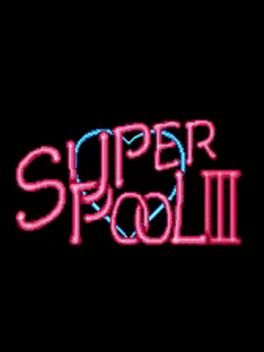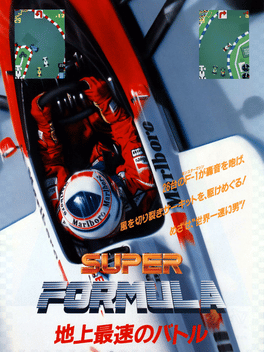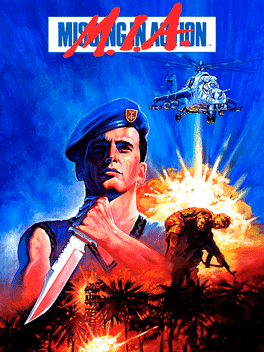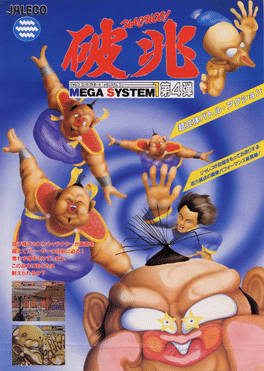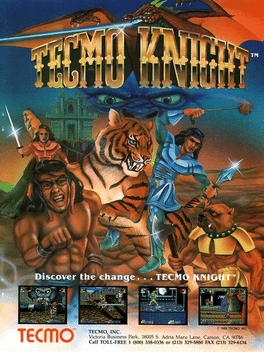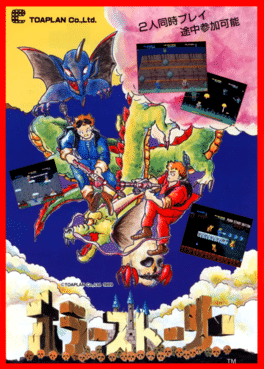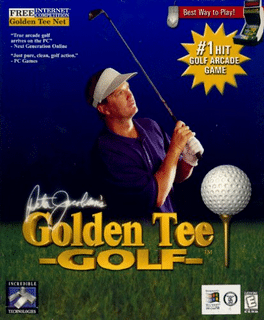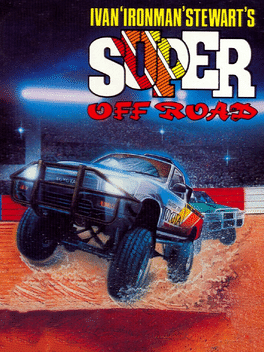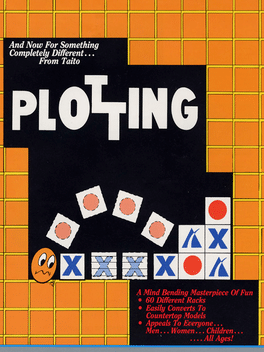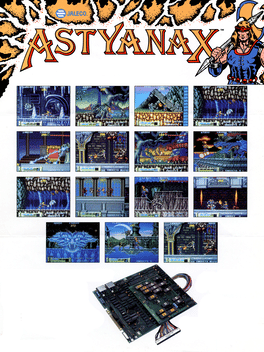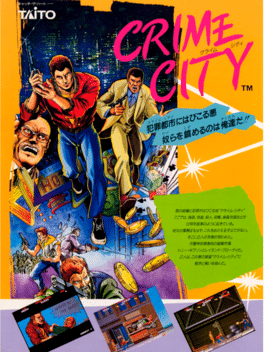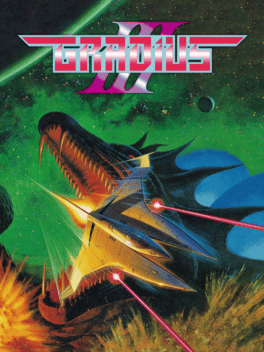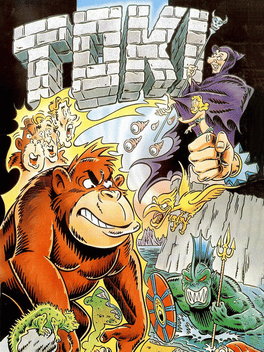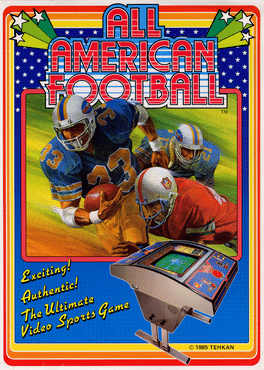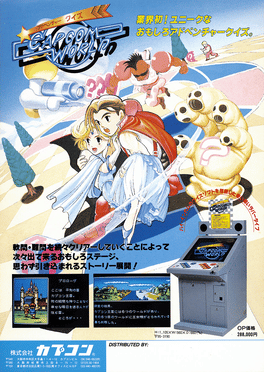New Arcade Games - Page 89
-
Rambo III
1989
Rambo III
1989
Rambo III for the arcade is a different game compared to the one released for the SEGA consoles and the computer ports. The arcade version was is a rail shooter game played from the third-person perspective whereby Rambo would have to blast through hordes of enemy soldiers, jets, tanks using various weapons with crosshairs, as well as fight tank bosses at the end of each level. -
Super Pool III
1989
Super Pool III
1989
In 1989, a version of Pocket Gal was released titled Super Pool III. This version of the game does not contain nudity, and it was released in North America by I.Vics. -
Ikari III: The Rescue
1989
The presidential candidate's daughter has been kidnapped! It is your job to get past enemy lines and rescue her. This is the third game in the Ikari Warriors series, and features similar arcade/action gameplay. The screen is a top down view which scrolls vertically, with numerous bad guys to defeat. You start the game with just your fists, and as the levels progress you can find weapons and other objects to help you out. -
Tough Turf
1989
Tough Turf
1989
Tough Turf is a 1989 2D beat 'em up arcade game. According to Kurt Katala of Hardcore Gaming 101: "Considering there was very little variation amongst the Final Fight and Teenage Mutant Ninja Turtles clones that popped up in the early 90s, Tough Turf is interesting to play a game that requires a different approach, and it really is a fresh alternative to Double Dragon." -
M.I.A. Missing in Action
1989
The player takes on the role of a US Army special operations soldier infiltrating enemy POW camps in Vietnam to find prisoners of wars and lead them to freedom. Like its predecessor, there are a total of six levels in the game: war-torn field, jungle, airstrip, rail-yard, POW camp, and escaping POW camp. M.I.A. can be played by up to two players, with Player 1 in green and Player 2 in blue. Throughout most of the game, the player's main weapon is a knife, which is capable of destroying any enemy in the game. By killing the red enemy soldiers, the player can acquire additional weapons. The available weapons consist of an assault rifle (12 rounds), a flamethrower (2 rounds), a bazooka (3 rounds), and grenades (3 rounds). Unlike Green Beret, the player can carry more than one weapon and switch between them at will. If the player loses a life, then only their currently equipped weapon will be lost. At the end of each level, an assorted amount of troops on fixed machine gun positions (usually four) that must be elimin -
Hachoo!
1989
-
Tecmo Knight
1989
Tecmo Knight
1989
The protagonist Tecmo Knight has the assistance of "Smokeman" and "Tiger". Pressing the "change" button allows Tecmo Knight to switch between the two. Smokeman uses powerful punches and kicks against enemies while Tecmo Knight rides him. While riding the tiger, Tecmo Knight has the use of a spiked ball and chain less powerful than Smokeman's attacks, but with greater range. When collecting the special dragon skull that randomly appears after defeating an enemy, the Tecmo Knight will summon the most powerful creature to ride on in the game: the Flying Dragon. Tecmo Knight is immune to attack while riding Flying Dragon, whose breath kills any monster in the game instantly, including the stage-end bosses. Using the "jump and attack" maneuver, Tecmo Knight can bound Smokeman or the tiger onto enemies and pummel them. Sometimes, if Tecmo Knight runs low on life, a blow by a weak monster will kill only Smokeman or the tiger, leaving Tecmo Knight to fend for himself with a very weak short-ranged attack. It is extremely h -
Demon's World
1989
Demon's World
1989
Demon's World, released in Japan as Horror Story, is a platformer arcade game that was developed by Toaplan and published by Taito in 1989. This game is multi-regional, meaning that it can be configured for different regions via the DIP switches. These settings change the legal warnings, can display the Taito licensing message and can change the title between the English version (Demon's World) and the Japanese version (Horror Story). -
Poker Ladies
1989
Poker Ladies
1989
Poker Ladies is an Erotic Card based game, Developed and published by Mitchell Corp. in 1989. -
Golden Tee Golf
1989
-
Ivan ''Ironman'' Stewart's Super Off Road
1989
star 7.2Enter the world of off-road racing as 4 vehicles will face each other, on a series of tracks which are based around flipped and reversed versions of a core selection. Fame, glory and bikini clad women await your victories and the taste of dirt awaits if you fail. Let a computer car beat you and you lose one of your 3 credits. Successful races bring more money, which can be used to soup up their machine. Boosts to top speed, grip and acceleration can be purchased, and your nitro boost must be kept topped up. If you are desperate for upgrades, you can buy into your spare credits. Only your off-road driving abilities will be enough to pull you to first place in these races. Play alone or with up to 3 other players (depending on the version) in this classic arcade game. -
Plotting
1989
-
Astyanax
1989
Astyanax
1989
star 5Astyanax is a side-scrolling platform action game set in a fantasy world. The hero sets out to slay the evil wizard terrorizing the land. He is armed with an ax and also has a magic lightning spell that can be powered-up two times. Magic upgrades and health potions can be found in small stone pillars. The player needs to beat monsters in a number of locales, jumping across pits and fighting bosses at the end of stages. Two-palyer co-op is supported, with the second player being palette-swap of Player 1. The game was designed by Tokuhiro Takemori who previously worked on Legendary Axe, and the basic game mechanic is similar -- in order to deal heavy blow with the axe the player needs to stop swinging it for a while. The NES version released after the Arcade game, while generally having same gameplay, features completely different level layouts, enemy designs and story. -
Crime City
1989
Crime City
1989
Play as policemen Tony Gibson and/or Raymond Broady in this multi-scrolling beat-em-up shooter. Shoot at a variety of enemies as you make your way through the various levels to reach the end bosses. Pick up power-ups including better weaponry, bullets and health drinks. -
Gradius III
1989
Gradius III
1989
star 7In the darkest reaches of infinite space, pure evil lies in wait ... The Dark Forces led by the god of destruction, Bacterian, prepare to launch a massive onslaught against the planet Gradius. Possessing unstoppable power, the Dark Forces threaten to plunge the Universe into total war and complete annihilation. Their invasion force smashes the Gradius defenses, and the surrounding planets soon fall like dominoes. Now Bacterian's evil grasp reaches for the heart of the resistance...planet Gradius itself... To counter the oncoming threat the United Gradius World Forces gather all their fighter craft. Half of them form a defensive net - the other half a strike team. But they are badly outnumbered and The Dark Forces easily tear through their thin frontline. No fighters survive the slaughter.... In a last gasp move, the United Gradius World Forces send out two fighters, previously considered too dangerous for combat missions: The InterDimensional VIC VIPER fighters. The Fighters take off for the heart of darkness t -
Toki
1989
Toki
1989
star 7.9The hero of the game is a young jungle-man named Toki. One day the evil wizard Dr. Stark kidnaps his girlfriend Wanda. When Toki tries to save her, he is turned into a monkey! Now Toki has to find Dr. Stark in his palace, rescue Wanda, and become a human being again! -
All American Football
1989
An American football game up to four players with all the features of "John Elway's Team Quarterback" and much more : improved graphics, sideline shop, etc. -
Coors Light Bowling
1989
-
Adventure Quiz: Capcom World
1989
This is a adventure game by rolling dice to advance and answer quiz.

